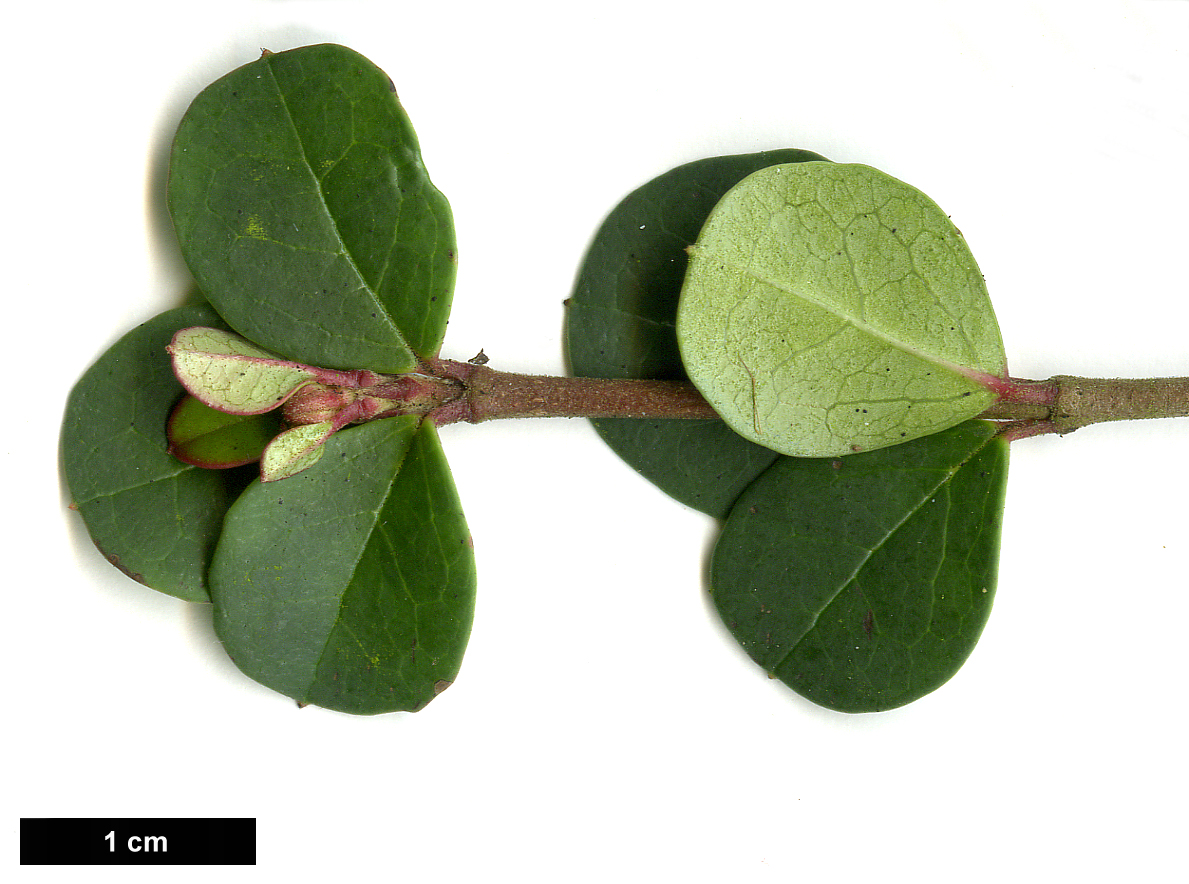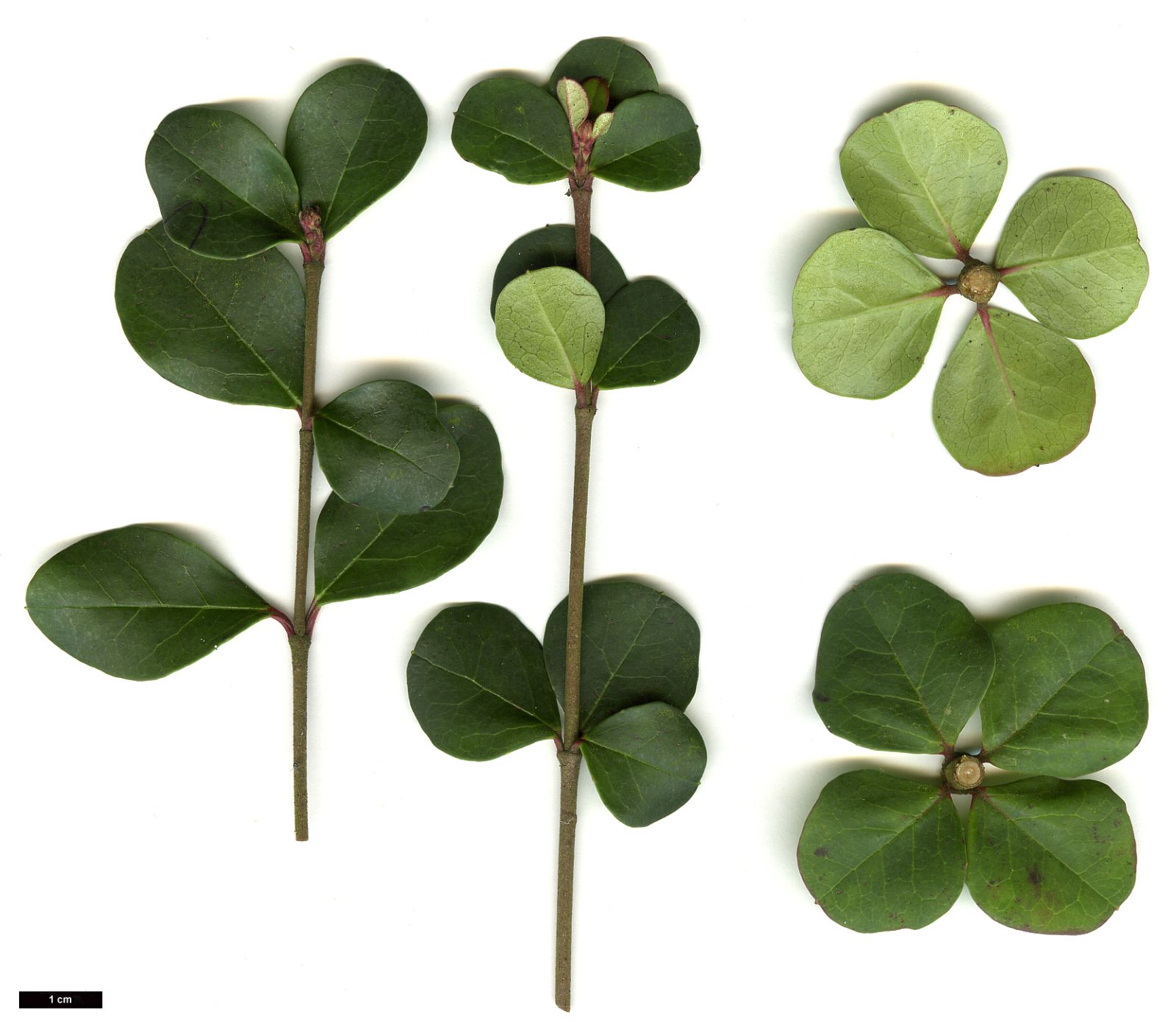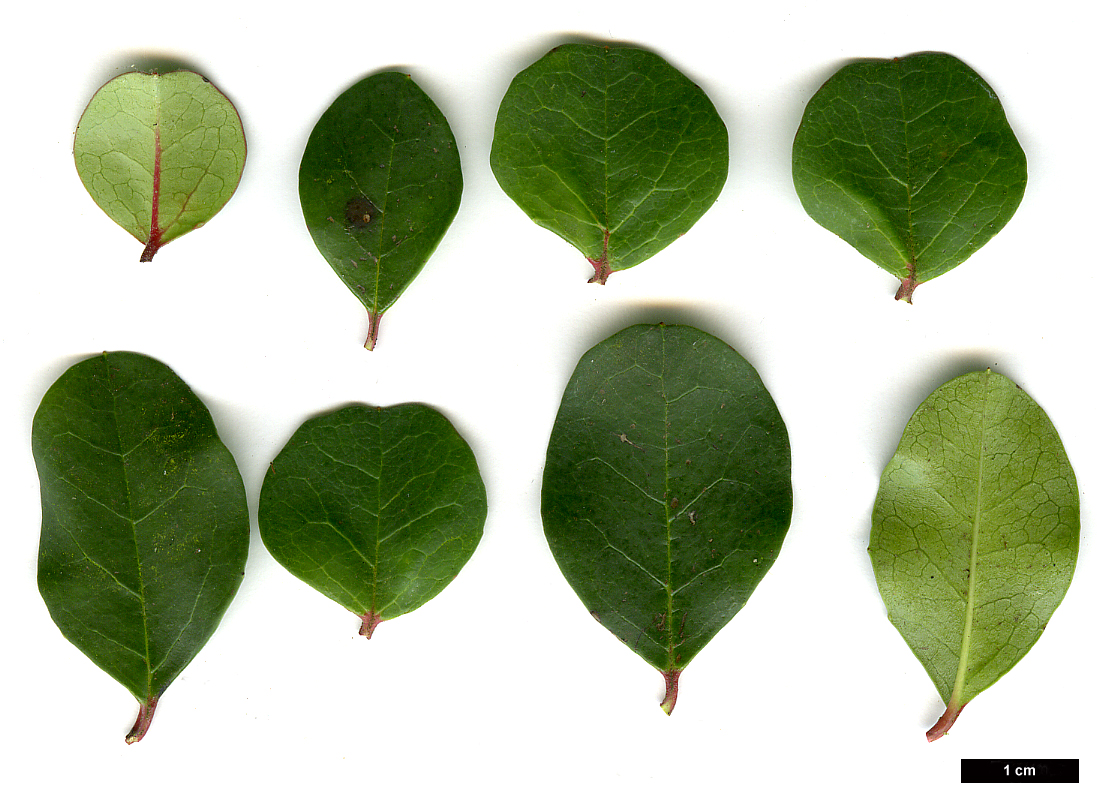Viburnum harryanum
Credits
Article from Bean's Trees and Shrubs Hardy in the British Isles
Recommended citation
'Viburnum harryanum' from the website Trees and Shrubs Online (treesandshrubsonline.
Genus
Other taxa in genus
- Viburnum acerifolium
- Viburnum betulifolium
- Viburnum × bodnantense
- Viburnum buddleifolium
- Viburnum burejaeticum
- Viburnum × burkwoodii
- Viburnum × carlcephalum
- Viburnum carlesii
- Viburnum cassinoides
- Viburnum cotinifolium
- Viburnum cylindricum
- Viburnum davidii
- Viburnum dentatum
- Viburnum dilatatum
- Viburnum erosum
- Viburnum farreri
- Viburnum foetidum
- Viburnum grandiflorum
- Viburnum henryi
- Viburnum hupehense
- Viburnum japonicum
- Viburnum kansuense
- Viburnum lantana
- Viburnum lantanoides
- Viburnum lentago
- Viburnum macrocephalum
- Viburnum molle
- Viburnum nudum
- Viburnum odoratissimum
- Viburnum opulus
- Viburnum phlebotrichum
- Viburnum plicatum
- Viburnum propinquum
- Viburnum prunifolium
- Viburnum rhytidophyllum
- Viburnum rigidum
- Viburnum rufidulum
- Viburnum schensianum
- Viburnum setigerum
- Viburnum sieboldii
- Viburnum suspensum
- Viburnum tinus
- Viburnum utile
- Viburnum veitchii
- Viburnum wilsonii
- Viburnum wrightii
An evergreen shrub ultimately 6 to 8 ft high, of bushy habit, sometimes taller; young shoots clothed with a minute, dark down. Leaves orbicular to obovate or broadly ovate, tapered at the base, rounded at the apex except for a small mucro, margins entire, or with a few obscure teeth; 1⁄4 to 1 in. long, from two-thirds to nearly as wide, dark dull green above, paler beneath, quite glabrous on both surfaces; leaf-stalk about 1⁄12 in. long, reddish. Inflorescence a terminal, compound umbel, 11⁄2 in. across. Flowers pure white, 1⁄8 in. across. Fruits ovoid, pointed, e in. long, shining, black.
Native of W. China; discovered and introduced in 1904 by Wilson, who remarks that it is rare on mountains at 9,000 ft. It is quite distinct from any other cultivated evergreen viburnum in its small privet-like leaves. It appears to be fairly hardy, and flowered for the first time in cultivation in 1914. It was named in compliment to Sir Harry Veitch.
From the Supplement (Vol. V)
This species is figured in Bot. Mag., n.s., t.875.



